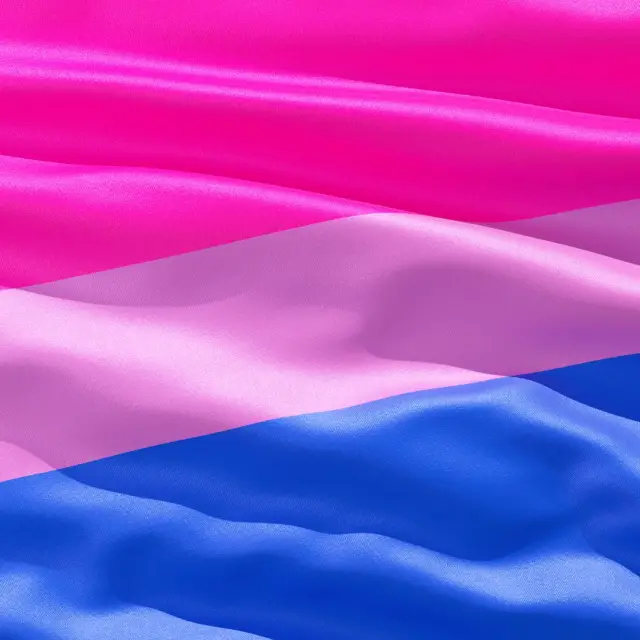Bisexuality, as a sexual orientation, is one of the many expressions of human diversity in terms of romantic, emotional and sexual attraction. Historically invisible or misunderstood, bisexuality has gained visibility in recent decades thanks to the efforts of activists, researchers and members of the LGBTQ+ community who work to dismantle myths and prejudices surrounding it.
Bisexuality refers to the ability to feel attraction to people of more than one gender. However, this definition can vary depending on cultural and personal context. Some bisexual people define their orientation as attraction to people of the same gender as well as other genders, while others take a broader view, considering their orientation as an attraction independent of gender.
It is worth noting that bisexuality is part of a spectrum, where not all people experience attraction equally towards all genders. Some may feel more inclined towards a specific gender at certain times in their lives, which underscores the fluid and diverse nature of this orientation.
A historical look
Throughout history, bisexuality has been present in diverse cultures and civilizations. In ancient Greece, for example, same-sex relationships, as well as those between people of opposite sexes, were common and often valued in certain social contexts. Likewise, many indigenous cultures in the Americas recognized gender identities and sexual orientations that challenged modern binary categories.
However, with the arrival of colonialism and the influence of European religious and social ideologies, many of these expressions of sexual diversity were repressed or stigmatized. In the 19th and early 20th centuries, bisexuality began to be studied from a scientific perspective, although it was often interpreted through a pathologizing lens. It was not until the late 20th century that LGBTQ+ movements made significant progress in depathologizing diverse sexual orientations, including bisexuality.
Myths and stigmas
Despite progress, bisexuality still faces numerous myths and stigmas, both outside and within the LGBTQ+ community. Some of the most common ones include:
Bisexuality as a "confusion" or "phase": Many people mistakenly assume that bisexuality is a transitional stage before "deciding" to be heterosexual or homosexual. However, research and personal testimonies confirm that bisexuality is a valid and stable orientation.
Promiscuity associated with bisexuality: There is a stereotype that links bisexuality with greater promiscuity or inability to maintain monogamous relationships. This is unfounded and perpetuates a reductionist view of human relationships.
Bisexual erasure: Bisexual people's relationships are often perceived as heterosexual or homosexual depending on the gender of their partner, which renders their orientation invisible and contributes to bisexual erasure.
Bisexuality in contemporary culture
In recent decades, the representation of bisexuality in media and popular culture has grown considerably. Television series, films and books have begun to include bisexual characters with complex and realistic stories, breaking away from the one-dimensional stereotypes that previously predominated.
Additionally, social media has played a crucial role in creating communities and safe spaces for bisexual people. Platforms like Instagram, TikTok, and Twitter allow users to share their experiences, educate others about bisexuality, and celebrate their identity.
Bisexuality in the field of research
Bisexuality has been the subject of increasing interest in academia. Recent studies have explored how the experiences of bisexual people differ from those of other sexual orientations in terms of mental health, discrimination, and access to resources.
For example, research has shown that bisexual people face higher rates of anxiety and depression compared to their heterosexual and gay peers. This is due, in part, to the double stigma they face from both the heterosexual and LGBTQ+ communities. This phenomenon, known as “double discrimination,” underscores the need for targeted approaches to supporting bisexual people.
Celebrating bisexuality
The celebration of bisexuality has been institutionalized in events such as Bisexual Visibility Day, which is commemorated on September 23 of each year. This date seeks to raise awareness about the challenges and achievements of the bisexual community, as well as promote inclusion and understanding.
Organizations like BiNet USA and others internationally work tirelessly to advocate for bisexual rights, provide educational resources, and encourage acceptance in all areas of society.
Bisexuality is an integral part of human diversity, rich in nuances and experiences. Recognizing, understanding and celebrating it is a vital step towards a more inclusive and equitable society. By dismantling myths, broadening representation and offering support to bisexual people, we can move towards a world where all sexual orientations are valued and respected.
In an ever-evolving world, bisexuality reminds us that diversity is not only natural, but essential to understanding the complexity of the human experience. At the end of the day, it's all about love, connection, and authenticity, regardless of the labels or categories we try to impose.
